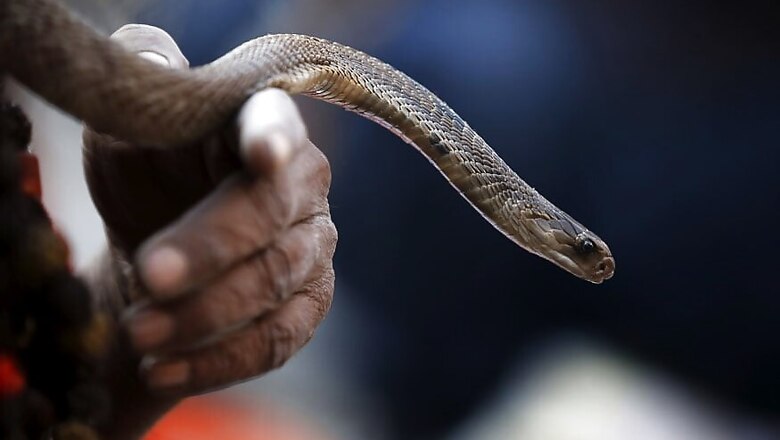
views
New Delhi: The World Health Assembly adopted a resolution against snakebites paving the way for India to address its deadly, highly prevalent but ignored problem. Notably, of the 1,00,000 people who die every year from snakebites, one of the world’s most neglected tropical diseases (NTD), atleast 46,000 are in India.
The Assembly’s resolution, adopted by 194 countries on Thursday, mentioned a “landmark” study in India conducted from 2001 to 2003, which estimated that 1.4 million to 2.8 million snakebites a year occurred in India, resulting in at least 46,000 fatalities.
India has been consistently recognised as one of the countries with highest mortality rate from snakebites, largely because of poor access to healthcare.
A 2015 Atlas of Rural Health by Jan Swasthya Sahyog (JSS), Chhattisgarh details how “untrained village ‘doctors’” step in with traditional herbal medicines immediately after snakebites, wasting crucial time. Since most people never reach a hospital, snakebite deaths are 30-fold higher than the numbers declared by official hospital returns, said the Atlas.
The estimation of 46,000 annual deaths comes from the Centre for Global Health Research, while the Indian Central Bureau of Health Intelligence reported only 1,350 deaths a year from 2004 to 2009, according to the JSS. This flies in the face of most non-government efforts to determine the prevalence of this menace in India, including the seminal Million Death Study (1998-2014), that called snakebite an underestimated cause of accidental death in India.
The study shows that most of these deaths occurred in 13 states, led by Uttar Pradesh, Andhra Pradesh and Bihar.
The international health organisation Meìdecins Sans FrontieÌres (MSF) (Doctors without Borders) has called for the government to be engaged in combating this NTD, and arming states adequately with antivenom which is already produced in India.
According to the JSS, India has 13 known species of venomous snakes, of which four cause the most damage — common cobra (Naja Naja), Russell’s viper (Daboia Russelii), saw-scaled viper (Echis Carinatus) and the common krait (Bungarus Caeruleus).
Snake bites aren’t just responsible for preventable deaths, but disability and lasting trauma, according to the Assembly resolution.
It noted, “An estimated 4,00,000 people a year face permanent disabilities, including blindness, extensive scarring and contractures, restricted mobility and amputation following snakebite envenoming. The psychological effects of snakebite envenoming are underrecognised. There is evidence from Sri Lanka that snakebite envenoming causes long-term psychological sequelae (a pathological condition), and that the prevalence of post-traumatic stress disorder in people who had had systemic envenoming following a snakebite was comparable to the levels of post-traumatic stress disorder observed following the tsunami that affected Sri Lanka in 2004 or after major road-traffic crashes.”

















Comments
0 comment